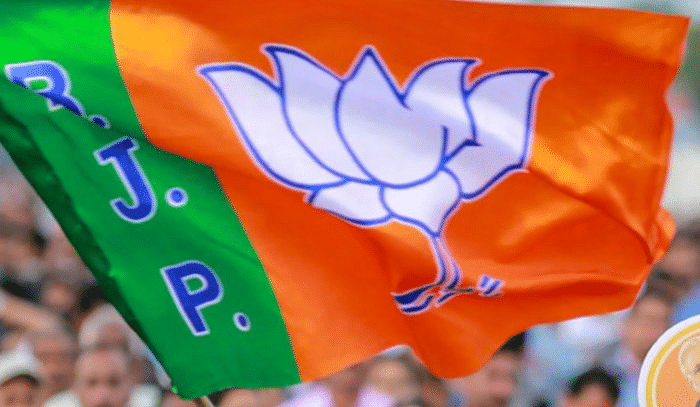
"In Delhi, where amidst the heart of the feats of an ancient Hindu king, Qutub Minar stands as a bludgeon of pride, such arrogance pains the mind; or in Kashi, where to insult Hindu's puja, Aurangzeb established a mosque, there I can see neither beauty nor welfare. But when I stand before the Taj Mahal, then the debate does not knock on the mind whether it was a feat by the Hindus or the Muslims. Then it appears as a feat of mankind," wrote Rabindranath Tagore in Japan Yatri (translation by the author of this article).
Apart from being a towering litterateur, Tagore was one of the greatest nationalist minds of British India and was also a humanitarian and a secular philosopher. The above lines written by him while praising Buddhists in an article reflect the dominant mindset of the Hindus for centuries.
However, Tagore or other nationalists who shared the view never thought of demolishing those structures that "pain the mind". They would have been equally pained if a temple was built in the midst of any Muslim grand architecture. They were truly secular and did not hesitate to call it a spade.
But, even before the independence, the Hindutvawadis, mainly Hindu Mahasabha, RSS and Bhartiya Jan Sangh (BJS), brought forth the demand to convert three mosques to temples - to restore the original status of janmabhumi of Rama, Krishna and the original Visheshwara temple of Varanasi. But these demands did not get any traction till the last years of the 1980s.
In the general election of 1952, the combined vote share of the BJS and Hindu Mahasabha was just 4.1 per cent (BJS 3.06 and Hindu Mahasabha 0.95). Even in 1971, the last time the BJS fought an election before merging into the Janata Party, it got a 7.35 per cent vote, while its later avatar, the BJP, which broke away from the Janata Party in 1980, secured 7.74 per cent votes in 1984. The Hindus were still following the path shown by Tagore and others.
But the scenario underwent a sea change after Lal Krishna Advani took charge of the BJP and revived the old demand for three temples, and started a campaign for resurrecting Ram Janambhoomi. The rest is history. However, Advani was not a popular leader, which was evident when the BJP lost the election in 2009 with him as its prime ministerial face of the BJP to challenge Manmohan Singh. So, how was it that he got off the ground a trend that changed the Hindu mindset?
The immediate trigger in the late 1980s was events like the reversal of the Shah Bano verdict, the banning of Salman Rushdie's Satanic Verses by the Rajiv Gandhi's government, and VP Singh holding darbar to Shahi Imam of Delhi for garnering Muslim votes and so on.
But the root of Hindu assertion went deeper. In a sentence, secular India did a plethora of things that hurt the sentiments of the Hindus, and with India reclaiming its place of glory in the last two decades, the Hindu resurgence has picked up an incredible speed.
Now, with the claim of finding the age-old Shiva Langa in a well inside the Gyanvapi mosque, an action replay of the Ram Janmabhoomi controversy is unfolding. The debate over Mathura was always in the queue, but unexpectedly, Qutub Minar and Taj Mahal are also being brought into it.
However, the BJP, as a political party in power, cannot be associated with these new churnings for its own sake. There are several reasons for it. Firstly, any spiralling of communal and social tension in the run-up to national elections in 2024 will jeopardise the strenuous efforts of post-Covid recovery, thereby diminishing the popularity of the Narendra Modi government.
Secondly, BJP's juggernaut is also heavily dependent on its performance as the ruler. It is no longer an opposition party but is firmly in the saddle and, in people's perception, will remain so for another decade thanks to a rudderless and leaderless opposition. It has to deliver. After all, in public perception, statecraft is limited to the people's well-being, and mainly the people's economic well-being.
Third, whipping up passion is a dangerous game; and BJP's too much proximity to Hindu resurgence may harm its cause of Hindutva, particularly when they have already proven their point in Ayodhya. Finally, it must be remembered that history repeats itself, as Karl Marx said, the first time as a tragedy and then as a farce.
It is time when India should get back to Tagore's secular nationalism that asserts insulting the Hindus was wrong but does not leave any scope for rectifying the historical wrongs. Muslims should also give up the confrontational approach to the issue, and both the communities must try to solve it amicably at the local levels. Otherwise, many controversies may erupt, centring on religious places that may overwhelm India's coveted journey to recover its ancient glory.
(Diptendra Raychaudhuri is a journalist and author based in Kolkata)
Disclaimer: The views expressed above are the author's own. They do not necessarily reflect the views of DH.